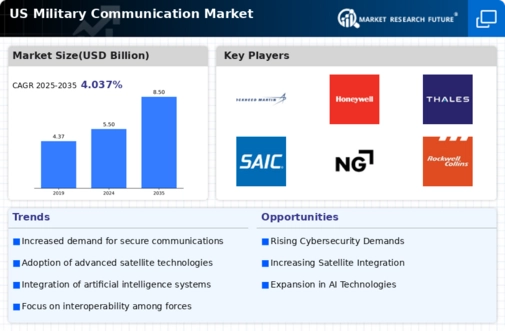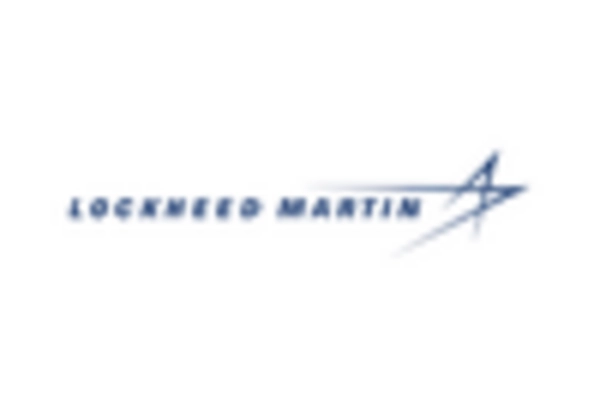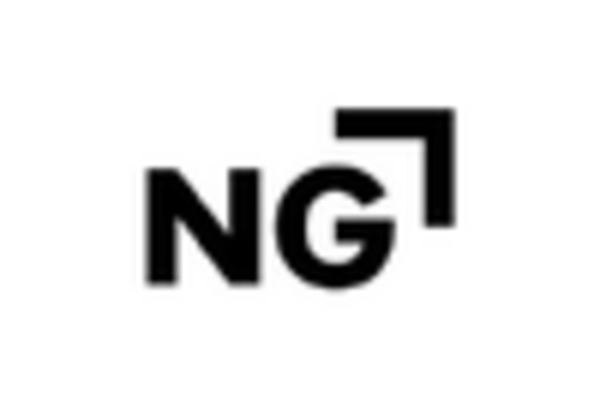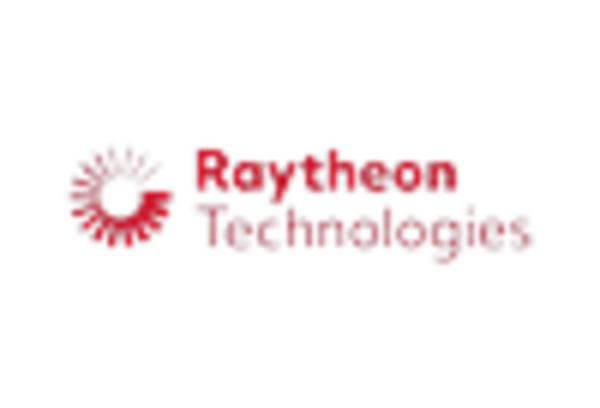Increased Investment in Defense Budgets
The military communication market is significantly influenced by the rising defense budgets across various sectors. In the US, defense spending has seen a consistent increase, with allocations for communication technologies being a priority. This trend is expected to continue, with the military communication market benefiting from enhanced funding for research and development. As of 2025, the defense budget is projected to exceed $XX trillion, with a substantial portion directed towards upgrading communication infrastructure. This investment is likely to accelerate the adoption of next-generation communication systems, ensuring that military forces remain at the forefront of technological advancements.
Emphasis on Secure Communication Protocols
In the military communication market, the emphasis on secure communication protocols is paramount. As threats to national security evolve, the need for robust security measures in communication systems becomes increasingly critical. The military communication market is responding by developing advanced security frameworks that protect sensitive information from cyber threats. This focus on security is reflected in the projected market growth, which is expected to reach $XX billion by 2025. The integration of secure communication technologies not only safeguards military operations but also enhances trust among allied forces, thereby improving collaborative efforts in various missions.
Growing Demand for Interoperability Solutions
Interoperability among various military branches and allied forces is becoming increasingly vital in the military communication market. The need for seamless communication across different platforms and systems is driving the development of interoperability solutions. This demand is reflected in the projected growth of the market, which is anticipated to expand at a CAGR of XX% over the next five years. The military communication market is focusing on creating standardized protocols and systems that facilitate effective communication during joint operations. Such advancements not only enhance operational capabilities but also ensure that forces can collaborate efficiently in diverse environments.
Integration of Next-Generation Satellite Systems
The integration of next-generation satellite systems is transforming the military communication market. These systems provide enhanced connectivity and coverage, which are essential for modern military operations. The military communication market is witnessing a shift towards utilizing advanced satellite technologies that offer higher bandwidth and lower latency. This transition is expected to drive market growth, with estimates suggesting an increase to $XX billion by 2025. The ability to maintain reliable communication in remote and challenging environments is crucial for operational success, making the integration of these satellite systems a key driver in the military communication market.
Advancements in Tactical Communication Technologies
The military communication market is experiencing a surge in advancements related to tactical communication technologies. These innovations are crucial for enhancing operational efficiency and ensuring secure communication among military personnel. The integration of advanced encryption methods and secure satellite communication systems is expected to bolster the reliability of military communications. As of 2025, the market is projected to reach approximately $XX billion, driven by the need for real-time data sharing and situational awareness on the battlefield. The military communication market is thus evolving to meet the demands of modern warfare, where timely and secure communication can significantly impact mission success.

















Leave a Comment